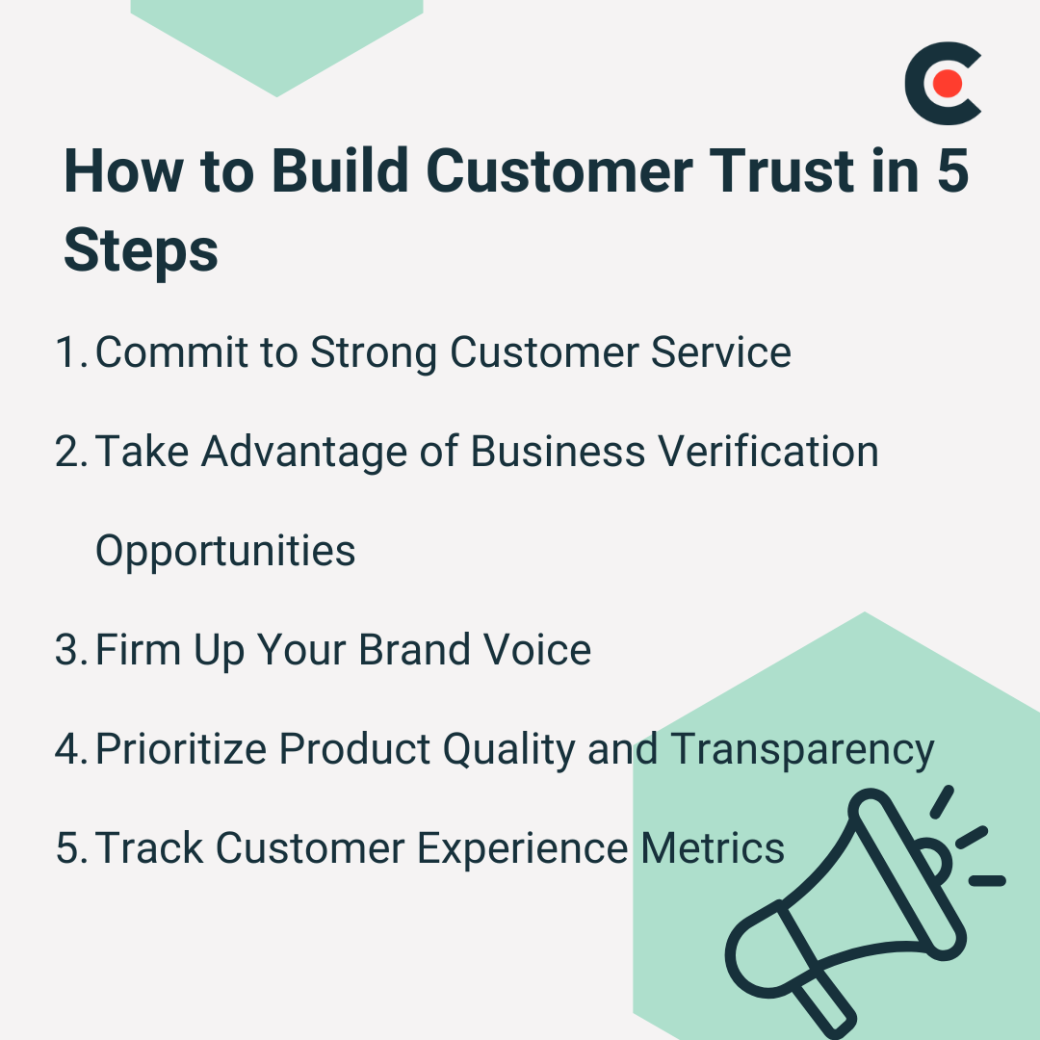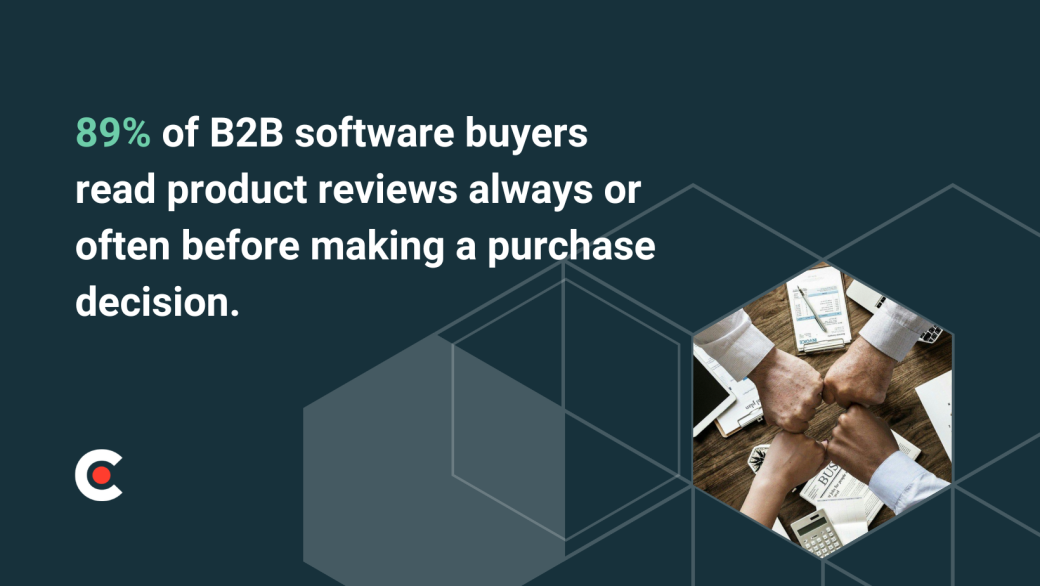

Updated April 9, 2025
Particularly in the B2B landscape, clients place a significant amount of trust in the companies they choose to partner with.
B2B relationships often involve substantial investments and long-term commitments, making trust a foundational element for success. For that reason, B2B clients look for partners that don’t just provide high-quality products or services, but who also are reliable, have integrity, and are able to deliver on their promises.
Looking for a Digital Marketing agency?
Compare our list of top Digital Marketing companies near you
Consequentially, the ability to build trust in your brand and its capacity to deliver is essential when it comes to converting potential clients — but building customer trust can be challenging thanks to consumers’ fear of fraud and scams, skepticism following previous experiences, and inconsistent brand behavior.
In this guide, we’ll explore the benefits of customer trust and share practical strategies for building and maintaining credibility. After all, you can’t expect clients to entrust you with their data and money if they don’t have confidence in your brand.
Customer trust is the confidence that a brand will act in the consumer’s best interest and always fulfill its promises. It’s not just about delivering the products and services that a customer pays for — that’s the bare minimum. Your business earns genuine customer trust when it’s viewed as competent, reliable, and safe.
According to Forrester Research, customer trust is shaped by seven “levers,” or values:
Additionally, Forrester reports that 30% of North American B2B buyers view competency as the most important trust lever, followed by dependability (19%) and consistency (19%). By promoting these core values in your organization, you can develop more trusting relationships with your clients.
Tylenol, for instance, used these levers to regain customer trust when a major crisis nearly derailed its brand. In 1982, several people in the Chicago area died after ingesting Tylenol capsules that had been laced with cyanide. The perpetrator(s) were never caught, and the situation created widespread panic because the product had been sold on store shelves across the country.
However, Tylenol’s response to the crisis became a textbook case in crisis management and how to rebuild consumer trust after a catastrophe. They pulled 31 million bottles of Tylenol off shelves to ensure that no one else got hurt. They then revolutionized pharmaceutical packaging to include tamper-proof bottles and lids to protect future customers.
How they handled this situation helped Tylenol build decades of goodwill with their customers. As a result, business boomed even though they temporarily took a major loss. This demonstrates that building and maintaining customer trust can have a tangible impact on a business and can directly impacts their bottom line.
As a B2B leader, you strive to build strong client relationships. After all, you want them to view your business positively and collaborate with you for many years.
Customer trust is the foundation of every great relationship. It’s the cement that helps you develop long-term partnerships with other businesses and build a stellar reputation. Here are two advantages of gaining and maintaining customer trust.
Customers naturally gravitate toward companies that they perceive as reliable and trustworthy. That’s especially true for B2B buyers, who often need to convince several stakeholders that a purchase is a worthwhile investment. In a competitive market, a strong reputation isn’t just nice to have — it’s a necessity if you want your business to thrive.
Earning customer trust is one of the most effective ways to improve your brand perception. According to a 2022 study published in the European Journal of Marketing, brands seen as competent and warm were more likely to receive positive evaluations from customers.
The study’s authors also observed that establishing a consistent brand personality gives businesses more freedom to personalize client interactions. They note that the "constituting warm and competent dimensions, as long as they are consistent across customers and time, can be emphasized to different degrees depending on the task at hand.”
In other words, as long as your brand is consistently trustworthy, you can adjust your approach as needed. When meeting with a new client, for instance, you might highlight how you can support their business. Or, if the customer cares more about competency, you could focus on demonstrating your expertise. This flexible strategy will help you connect with each customer while reinforcing your brand’s reliability.
Building credibility and trust can significantly impact your bottom line, too. According to Forrester’s The State of Global Business Buyer Trust in 2024 report, clients are more likely to purchase products and services from companies they trust. Additionally, almost two out of three purchase influencers are willing to pay a premium to work with trustworthy businesses. By earning their confidence, you can gain a competitive edge and grow your business.
Strengthening credibility can also help your business navigate challenges and crises. When customers have faith in your brand, they’re more likely to keep supporting you during tough times. A positive reputation also makes it easier to regain trust after setbacks like product flops or ill-conceived marketing campaigns.
For example, Microsoft’s credibility helped it recover after its Vista operating system was widely regarded as one of the “biggest tech failures” of the early twenty-first century. Many users gave it another chance with Windows 7 because the company had a positive reputation. As a result, Microsoft was able to overcome this seemingly catastrophic failure and maintain its status as a leading tech company.
B2B businesses often focus on attracting new leads, but retaining your existing clients is just as critical. These buyers already know your brand and what it’s like to work with you, making it easier to guide them to a purchase decision again in the future. Plus, you never know when a loyal customer will come to you with an exciting new project or a need to ramp up their services.
Customer trust can help you transform one-time clients into your business’s most loyal fans. When buyers feel confident that you can deliver on your promises, they’re more likely to see your business as a long-term partner rather than a stopgap. This trust can inspire them to make repeat purchases or explore more of your products and services.
The best part? If you’ve earned enough trust, you don’t need to offer the lowest prices or most innovative features to retain customers. That’s because many B2B buyers prefer low-risk decisions over potentially better but riskier options. According to Forrester’s 2023 Business Trust Survey, 43% of B2B buyers reported that they make defensive purchase decisions over 70% of the time.
This data indicates that consistency and stability are more influential in driving purchasing decisions than other factors. If you’ve demonstrated your brand’s reliability, customers are more likely to keep choosing you over unfamiliar competitors.
Earning customer trust can also help you promote your business through word-of-mouth. The same 2023 survey from Forrester found that B2B buyers who trust a company are almost twice as likely to recommend that company externally. These personal recommendations can strengthen your credibility and help you grow your customer base, ultimately boosting profitability.
It’s easy to take your client relationships for granted, especially if your business has had a positive reputation for many years. However, even the strongest B2B relationships can be broken if customer trust is lost. It only takes one big misstep — like a public relations fiasco or an unintentionally dangerous product — to undermine your credibility.
A lack of trust can damage your brand reputation, sometimes permanently. B2B buyers often have long memories, and they may feel reluctant to support your brand if you’ve tarnished your public image. Some customers may fear that they’ll harm their own customer relationships if they associate with an untrustworthy brand.
For instance, Forbes came under fire in early 2024 after Adlytics accused the company of tricking hundreds of brands into believing they were buying ad space on the publication’s website. Instead, Forbes allegedly placed the ads on a spammy, made-for-advertising subdomain. This troubling revelation damaged trust in Forbes and forced the company to shut down its subdomain.
Losing customer trust can also have significant financial repercussions. Many B2B and business-to-consumer (B2C) customers refuse to support businesses that they view as dishonest or unreliable.
According to PwC’s 2022 Consumer Intelligence Survey on Trust, 73% of customers say they would spend significantly less at a business that lost their trust. Additionally, nearly half (44%) have stopped buying from a company altogether due to a lack of trust. As a result, businesses that lose trust may see their revenue plummet as clients flock to competitors.
The downfall of the digital freight broker Next Trucking is a vivid example of how damaged customer trust can lead to devastating financial consequences. In 2024, the company lost two major clients, Amazon and Tesla, after its carriers alleged that they hadn’t received payment in months. This loss of revenue forced Next Trucking to furlough workers while it scrambled to raise more funds.
Earning customer trust doesn’t happen overnight. It’s a slow process that requires continuous and consistent effort. But don’t let that deter you — it’s well worth the investment. Follow these simple steps to get started.

In a perfect world, qualified leads would get in touch with your sales team and immediately buy your products or services. But in reality, B2B buyers often interact with a brand several times before they even consider making a purchase decision. For example, a prospect might read your CEO’s thought leadership content and explore your website before even mentioning your brand at a strategic meeting.
At every touchpoint, the customer experience (CX) influences how buyers perceive your brand. If you deliver stellar customer service at every step, you can build trust and improve brand perception. On the other hand, bad CX can cause leads to lose interest or even view your company negatively.
Avoid this issue with strategic and customer-centric touchpoints. Aim to provide clear communication and transparency at every stage. This will show clients you’re truly committed to their success.
Here are a few strategies to improve CX throughout the buyer’s journey:
These strategies will help you deliver consistently positive customer experiences. When clients have enjoyable interactions with your business, they’re more likely to buy your offerings and keep coming back. Providing high-quality customer service also builds trust by demonstrating that you truly care about their needs.
Brand-owned channels give you complete control over perception of your brand. You can decide everything from the tone of your messaging to which products to showcase. However, many interactions with your customers will occur through third-parties. For instance, potential buyers might read former client reviews online or encounter user-generated content on social media.
External content can significantly impact how customers perceive your brand. Many B2B buyers look to third-party channels to verify what service providers claim and for objective information on what it’s like to work with them. In fact, the 2023 State of B2B Software Reviews report found that:

Positive testimonials can increase trust, while negative ones may dissuade potential clients.
Fortunately, many third-party channels provide verification to help reassure clients that a company is legitimate — something that’s become more important than ever with the proliferation of fraudulent companies and artificial intelligence-powered scams.
For instance, Clutch Verified companies have undergone an extensive vetting process, including a business credit check, to confirm that they are legitimate, trustworthy, and reliable.
This distinction can set your business apart from competitors and enhance your credibility. For buyers seeking reliable service providers, Clutch Verification can be a deciding factor. Particularly in competitive markets, earning this status can help your business stand out and give buyers the confidence they need to make a purchase.
Developing a unified brand voice can significantly improve trust in your company. If a company’s behavior or messaging is inconsistent across different platforms or channels, it can erode trust. Customers expect brands to deliver on their promises consistently, and discrepancies between what a company says and does can lead to doubts.
Every team member should be able to communicate the same messaging, regardless of the platform – from Instagram comments to Reddit forums, your brand voice should be consistent. That way, customers can feel certain that your brand is authentic and transparent.
Creating brand guidelines is the most effective way to establish consistent communications. These standards typically include:
Your staff should refer to these guidelines whenever they interact with clients. This approach allows your company to provide a consistent customer experience, no matter which employee is behind the keyboard.
As every good parent or spouse knows, following through on promises is key to building trust. The same holds true for B2B businesses. The most reliable companies go out of their way to uphold their commitments, even when it’s inconvenient.
Start by marketing your products and services honestly. That means giving accurate descriptions of your offerings, including their strengths and weaknesses. Additionally, if a product doesn’t meet industry standards, you should pull it from the market and work on improving it. These strategies will help you manage customer expectations and protect your company from legal risk.
You should also be open about product availability, pricing, and any obstacles your clients might encounter. Is a customer interested in a product that won’t fit their needs? Tell them about this limitation upfront instead of persuading them to buy something that won’t be the right fit. Similarly, if you can’t meet a promised delivery timeline, communicate this information as soon as possible. By prioritizing transparency, you’ll avoid disappointing or frustrating clients.
Unlike the number of sales or the amount of revenue, customer trust can be tricky to quantify. You may wonder if your efforts are paying off or whether it’s time to experiment with new strategies.
Measure your progress by monitoring these key customer experience metrics:
Use these insights to adjust your strategies as needed. For example, if your business has a poor customer effort score, you might improve your website or support services to deliver a more streamlined experience.
At first glance, customer trust might seem like a natural byproduct of great products and services. However, businesses must actively cultivate confidence by acting with integrity and delivering on their promises.
Get started by developing brand guidelines and verifying your company on third-party platforms like Clutch. As you build customer trust, you can attract a loyal following of clients and grow your business.


